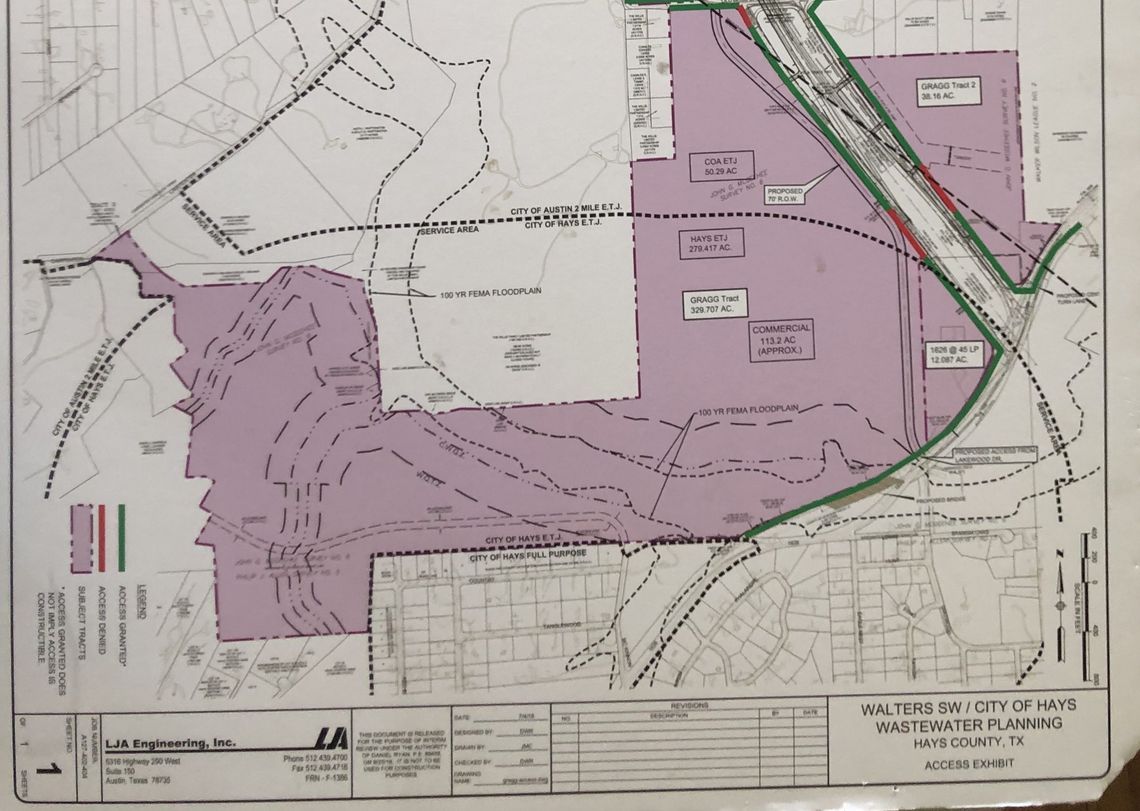By Brittany Anderson
HAYS — Residents of the city of Hays pride their home on being a “little piece of heaven on Earth,” but a potential development is threatening to cause a myriad of problems.
Hays, located a few miles northwest of Buda, has a population of just under 300. Since 2013, the city has been negotiating a development agreement (DA) for a proposed development called Hays Commons, then signed with developer Walters Southwest but now under MileStone Community Builders.
The Hays City Council held a public workshop with MileStone on Oct. 20 to discuss the DA and its potential changes, as well as address some of the concerns that have been raised, including requests from MileStone that residents and local environmental groups are pushing back on.
Hays Commons spans over 300 acres and proposes over 200 residential units on a mix of lot sizes — most on quarter-acre lots, some on third-acre lots and only a couple dozen on one-acre lots. Parkland and several acres of commercial space are also proposed.
Most notably, the development is situated over the Barton Springs portion of the sensitive Edwards Aquifer Recharge Zone (EARZ). A 2008 study prepared by ACI Consulting for previous developer Walters Southwest identified 52 karst features, or sensitive environmental features, on the tract of land where Hays Commons is set, 27 of which had the Texas Commission of Environmental Quality rating of “sensitive.”
One of MileStone’s controversial proposals is a Texas Land Application Permit (TLAP) on the development, which allows treated effluent water for irrigation. Many are opposed to this idea including Carol Pennington, a resident of nearby neighborhood Chaparral Park, who said that a TLAP is the “worst thing” that could be put on this location.
“There are over 36 environmental features, a small creek that floods after three inches of rain and at least one tributary creek on this section of land where you want to spread treated wastewater. That has the potential to go directly into the Edwards Aquifer and our drinking water,” Pennington said. “This is the most irresponsible and negligent plan and needs to be drastically changed.”
Another MileStone request is that the Hays council grant them consent to create a municipal utility district (MUD). MUDs provide developers an alternate way to finance infrastructure such as water, wastewater and road facilities, but this has also raised red flags for residents and environmental groups.
In a letter addressed to the Hays City Council, Save Our Springs (SOS) Alliance executive director Bill Bunch wrote that MileStone’s MUD request would increase density of the development — consequently, its impervious cover, or artificial surfaces that do not absorb rainfall — and the treatment and irrigation of municipal wastewater over the EARZ. Both would threaten to pollute the many nearby drinking water wells.
“There is simply no safe way to irrigate treated wastewater on the EARZ,” Bunch wrote. “Yet, as I understand, your proposed actions would both approve and help finance this unsafe method of managing treated wastewater that would be generated by the development.”
MileStone has outlined other routes it may try and take if they do not get council approval on the MUD. It has considered asking the city of Austin to provide water and wastewater services to Hays Commons instead, although MileStone attorney Jeff Howard said that they have not yet reached out to Austin about this despite it being a discussion point for several months.
Another option on the table is petitioning a MUD through TCEQ , although environmental groups think this is unlikely, given the negative environmental impacts the development poses.
Some of MileStone’s plans also do not take into account what SOS has outlined for this area. The development’s impervious cover would reach 35%, despite SOS’ ordinance that limits impervious cover in sensitive areas like this to 15%. Additionally, the development’s proposed mix of quarter-acre, third-acre and one-acre lots do not meet the half-acre minimum lot size required by SOS.
Throughout the many ongoing discussions, most residents have stated that they are not anti-development, but simply want to ensure that whatever iteration of the development that gets built does not threaten current and future livelihoods — and they, along with other groups, are committed to protecting this land.
In his letter, Bunch asked the council to step back from the proposal until all relevant documents are made available to the public, SOS, the Barton Springs Edwards Aquifer Conservation District, city of Austin and Hays County. Save Barton Springs board member Michelle Camp suggested the same, recommending to delay any vote until engineers, scientists and other local experts can be consulted.
Because the Oct. 20 meeting was just a workshop session, no action was taken. Further discussion will take place at upcoming Hays City Council meetings, and a vote on the DA — whether it is the original 2013 agreement or an updated version — is possible.










